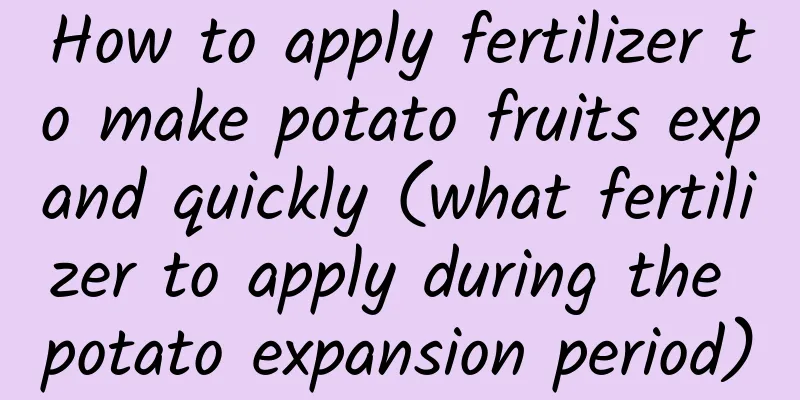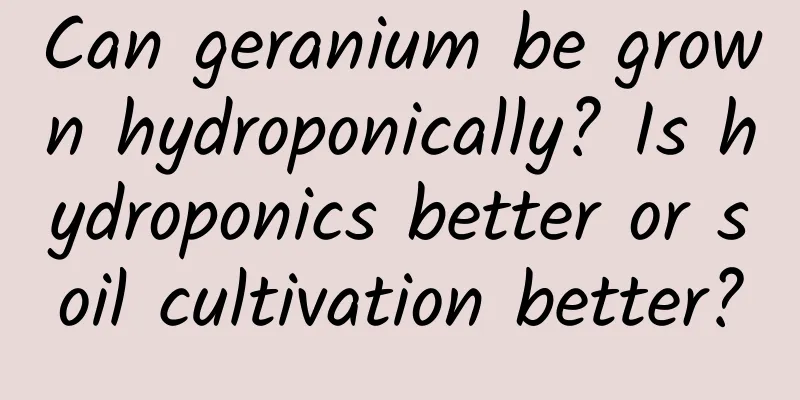How to apply fertilizer to make potato fruits expand quickly (what fertilizer to apply during the potato expansion period)

|
Potatoes are the fourth largest crop in the world and are used as both food and vegetable. my country is the world's largest potato producer. There are many people growing potatoes here, but the potatoes grown by each household vary in size and yield, which is a problem of yield traits. 1. Factors that affect the size of potatoesHere, almost all customers like big potatoes, and they reject all potatoes weighing less than 2 taels. There are many factors that affect the size of potatoes, such as variety, seeds, planting patterns and techniques, environment, pest and disease control, soil, fertilizer and water management, etc. Let's just talk about the effect of fertilizer on potato size. Second, fertilizer can affect the size of potatoesWe get nutrition from eating food to grow, and food gets nutrition from eating fertilizer to grow. Fertilizer is the food of plants. Without sufficient nutrition, any crop will find it difficult to obtain high yields and will not grow well. High-yield potatoes can produce nearly 10,000 kilograms per mu. Can you imagine how much fertilizer it needs? Therefore, it has a relatively large demand for fertilizer. When we cultivate potatoes, in order to ensure its normal growth and development, we have to apply more than 10 kinds of nutrients, such as nitrogen, phosphorus, potassium, calcium, magnesium, sulfur and some other trace elements, so as to avoid nutritional deficiencies and grow bigger. Potatoes absorb more nitrogen, phosphorus and potassium. These three things are the main elements that promote root development, stem and leaf growth, and size expansion. Among them, potassium is absorbed the most, followed by nitrogen and phosphorus. Therefore, it is best to use nitrogen, phosphorus and potassium compound fertilizer for planting potatoes, which will make them larger and have higher yields. Potatoes lack nitrogen and their root systems are poorly developed, the plants are short, the leaves are light green or yellow-green, the inside of the potatoes are rusty, and the flesh is hard and inedible. Think about it, the root system is the mouth of the plant. If the teeth are not good, nothing will taste good. How can it grow big fruits? Nitrogen deficiency in potatoes not only makes it difficult to obtain high yields, but also affects their size. Potato plants that are deficient in phosphorus grow slowly, are short and weak, have few branches, small and slender leaves, curled and dull leaves, and shed leaves early and age prematurely. Think about it, leaves are factories that produce nutrients. If they lack phosphorus, they will curl and fall off early. Doesn't this mean that the factory has stopped production? Can we have high-yield and large potatoes? Potatoes are more seriously deficient in potassium because they are potassium-loving crops. Potatoes that are deficient in potassium do not grow well, but grow in clusters, with curled and yellow leaves, and the lower leaves gradually dry up, and the size of the potatoes becomes smaller. Moreover, the inside of potatoes that are deficient in potassium are gray and difficult to eat. Similarly, potatoes cannot grow large if they lack trace elements such as calcium, magnesium and sulfur. Not only will it be difficult to grow large potatoes, but their edibleness will also be reduced, or even lose their edible value. We can use ternary compound fertilizer to provide nitrogen, phosphorus and potassium fertilizers, and we can use organic fertilizers to solve the problems of calcium, magnesium, sulfur and other trace elements. After all, organic fertilizers such as manure, compost, cake fertilizer, humic acid fertilizer, soil manure, green manure, etc. contain a large amount of calcium, magnesium, sulfur and other trace elements, and the content is relatively rich. 3. Influence of other factorsIn addition to using fertilizers to increase the size of potatoes, water, light, pests and diseases, cultivation and management techniques, growth inhibitors, etc. also have a great impact on the size of the potatoes. Some people say that potatoes are grown big because of hormones, but that is impossible. The growth-enhancing hormones we commonly use are sprayed on leaves, and their function is to inhibit the growth of the above-ground part and allow nutrients to flow back to the potatoes underground, thereby suppressing the growth and promoting their expansion, thus balancing nutrition and preventing nutritional imbalance. Therefore, if you want potatoes to be big, high-yielding and delicious, it is a good idea to increase the application of organic fertilizers and combine them with chemical fertilizers such as nitrogen, phosphorus and potassium. When we grow potatoes here, we basically use organic fertilizer as base fertilizer, and chemical fertilizer as topdressing and seed fertilizer. This can greatly increase the yield of potatoes. At the same time, the potatoes swell quickly and look good. There are fewer deformed potatoes and more large potatoes. They are also delicious, sweet and chewy . |
Recommend
How to hydroponically cultivate dried azalea branches (home cultivation method for hydroponically cultivating azaleas)
How to hydroponically cultivate dry branch azalea...
Can white orchids be placed in the bedroom?
1. Can it be placed in the bedroom? If your famil...
Can figs be transplanted in autumn? Transplanting methods and precautions
Can figs be transplanted in autumn? Fig plants ar...
Can Clivia be grown in the living room? Can ferrous sulfate be used?
1. Can it be kept in the living room? The leaves ...
Golden Edge Tiger Pilan Cutting Method
1. Preparation It is best to choose spring and au...
How to remedy excessive fertilization in flower cultivation
1. Watering and dilution You must be careful when...
Is avocado the same as alligator? How to plant potted plants?
1. Is it an avocado? It's avocado. Avocados a...
How to grow Polygonatum odoratum potted plants
Polygonatum odoratum potted plant maintenance Pol...
Can orchids be grown in coconut coir?
Can orchids be grown in coconut bran? Coconut bra...
How to grow strawberries in pots
For strawberry potted plants, planting strawberri...
It’s the flowering season for Christmas cactus. Take care of it like this so it will bloom like a waterfall.
Cuttings of Christmas cactus The temperature drop...
Can yacon be planted as seeds? Can it be planted after it sprouts?
1. Can it be planted as seeds? Yacon can be plant...
Crinum hydroponics method
Hydroponic method of Crinum 1. Use transparent gl...
When is the best time to plant Guangdong choy sum?
Chinese cabbage, also known as cauliflower and ca...
What month is suitable for planting cherry tomato seedlings?
When to plant cherry tomato seedlings Cherry toma...









